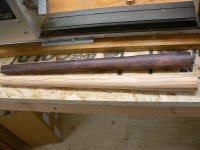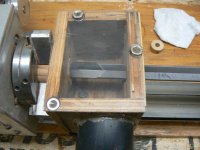That's a really great setup!! As far as inattention goes. I've worked around large machines my entire life and I'd hope you reconsider your position regarding safety.
Thanks Randy...
And for the most part everyone is correct about gloves it is a no-no with lathes or any other rotating equipment. However like yourself I grew up working with equipment, and I have seen and investigated many incidents regarding heavy equipment and machinery due to the pleasures of my work history.
My coring lathe has no rotating parts exposed besides the chuck (yes I could shield this to cover all the bases) however if I am stupid enough to get my hands anywhere near the 6 jaw bison I deserve to lose an arm or hand. I run double lockouts on my power switches so "accidental" bumping will not activate the machine while messing with the chuck. I grew up working metal so the hot chips always hitting my hands was enough to warrant the gloves and a strict set of operation guidelines. I guess it just stuck with me as I moved to wood with metal work on the side?
My apologies if my "comment" on safety offended anyone it was just a snippy comment. I am in no way stating that people should wear gloves!!! This was only intended to be a video on the dust setup and to show how it worked.
I do appreciate the comments about safety as it is a huge concern in our line of work! I should have left that comment out of the video (however I still would have worn the gloves). If my glove ends up in my chuck it's not the gloves fault it's mine :frown:



